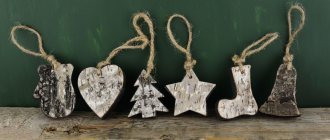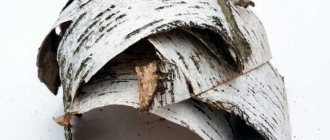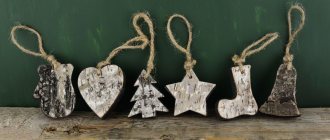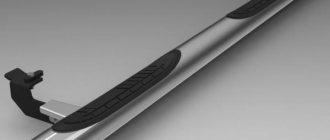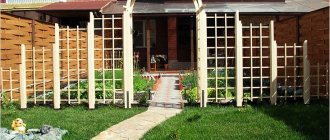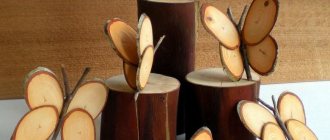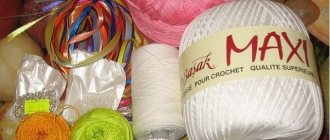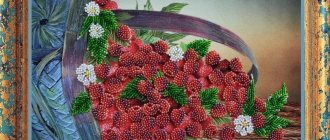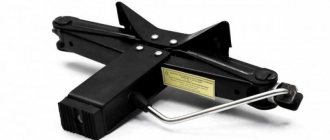- February 27, 2019
- Weapons and ammunition
- Michael
Almost every knife lover's collection includes at least a few tools with birch bark handles. Which is not surprising - this is a really beautiful, practical and easy-to-use material. Moreover, such a handle can be made at home, unlike analogues made of plastic, craton or elastron. That is why some knife lovers eventually have the question: “How to make a handle from birch bark yourself?” Let's look at this interesting question, and at the same time evaluate the main advantages and disadvantages of the material.
The main advantages of birch bark
One of the important advantages has already been mentioned earlier - it is external beauty and elegance. Yes, many knife lovers highly value this factor. After all, not every knife is a working tool - some simply lie on the shelf, add to the collection and perform rather an aesthetic function, allowing the owner to admire a beautiful, high-quality item.
Another important plus is grip. This is already a factor of interest for people who actively use knives. The knife handle, made of birch bark, is soft and smooth, fits perfectly in the hand, and the risk of fingers slipping is minimized both during normal work and during stabbing blows. Moreover, the grip remains high even if the hand is dry, clean, and in a wet or even bloody palm. The conversation here is not at all about murder or self-defense - after all, knives, especially hunting knives, are often used when cutting up the carcasses of killed animals.
Many knife lovers simply like the feeling that occurs when you take such a tool in your hand. Birch bark is pleasant to the touch, even in winter, at temperatures of -30 degrees Celsius and below, it retains the illusion of warmth. She always seems to be warm. In addition, it practically does not cool the hand due to its very low thermal conductivity. This is very important if you have to do some work around the camp while hiking or hunting in winter. It is inconvenient to work with a knife while wearing gloves or mittens. And the handle made of plastic and rubber, not to mention metal, bone and horn, is quite cold on the hand, causing a feeling of discomfort.
Finally, there is no doubt that with proper care, a birch bark handle will last for many decades. This material does not dry out, is not afraid of direct sunlight, and does not crack from strong impacts. Therefore, having made the handle with your own hands, you can rest assured that you will definitely not have to regret a damaged knife.
Stacked leather
Excellent material for the handle. The properties of a leather handle are superior to many natural materials. Advantages: - thermal conductivity - it does not cool the hand, since the surface layer quickly heats up from the heat of the palm; — appearance – pleasant not only to the touch but also to the eye; — the appearance of the handle can be molded to suit your palm even after purchase; Disadvantages: - hygroscopicity - gets wet at high humidity, takes a long time to dry, and the blade may be damaged; - wear resistance - with prolonged use it gets rubbed and scratched.
Advantages: — practicality, light weight, appearance; - does not slip in the hand; - absorbs excess sweat; - very easy to process; Disadvantages: - impact resistance - does not withstand strong impacts; - thermal conductivity: - often the hand temperature is not enough to warm up the wooden handle.
Disadvantages of the material
Unfortunately, any material that has important advantages is never without its disadvantages. And the handle made of birch bark is no exception.
In fact, there is only one drawback, but it is very important. According to some knife lovers, it completely negates all the advantages, sharply reducing the attractiveness of birch bark and forcing them to look for a more suitable material.
This disadvantage is water permeability. Yes, yes, birch bark absorbs moisture perfectly. Even in the case of water, this is not very good. If you fail to dry the wet handle in time, it will begin to rot. But even if you dry the birch bark efficiently, several such sessions can lead to a decrease in the quality of the handle.
The situation is much worse if the handle becomes soaked with sweat. Still, sometimes you have to work with a knife for a long time in the heat. The hand will involuntarily sweat, and the sweat, absorbed into the handle, will become a source of an unpleasant odor, which will be very difficult to get rid of. It also causes the light brown material to darken. Moreover, the darkening is uneven and therefore not very attractive.
But the worst thing is for hunters and fishermen. After all, they often work with a knife when cleaning fish, sanding prey and cutting. In this case, the birch bark handle may become saturated with blood or fish mucus. And this will definitely happen if even a drop of biological fluid gets on the birch bark, which the owner does not eliminate immediately. Not only will the attractiveness of the handle be reduced due to the dark heel, it will also smell disgusting. But it is simply impossible to clean birch bark from such a peculiar “impregnation”.
In general, there are several ways to get rid of this shortcoming. But we'll talk about them a little later.
Micarta
Electrical insulating material, which consists of a resin-based polymer film made from a mixture of phenolic raw materials, glued with various electrical insulating materials - different types of fabrics and paper. Micarta has a good appearance, durability and moisture resistance. This material is well processed. The color of the material depends on the color of the micarta components and the resin used for gluing. By changing the color of the components of micarta, different, sometimes very bizarre, color compositions and textures are obtained. Moreover, micarta sometimes imitates some natural materials.
What materials and tools will you need?
If you want to make a knife handle from birch bark with your own hands, you will need the appropriate materials and tools. With their help, work will go quickly and easily even for the least experienced craftsman. Despite the fact that making a handle seems complicated, the process is quite simple and easy, requiring not so much skill as slowness, accuracy and perseverance.
So, for work you need to prepare in advance:
- Birch bark in quantities sufficient to make a handle.
- The blade of a knife without a handle, for which the handle is made.
- Several small (matchbox-sized) wooden blocks.
- Grinder equipped with a medium-grit grinding wheel.
- Drill – electric or manual.
- Clamping vices with wings and pins - two pieces.
As you can see, the set is not too large. Many DIYers have everything they need. And when all the tools and materials are at hand, you can start working.
Plastic sheath
Another option is to make a knife sheath from plastic sewer pipe. In addition to this, you will need:
- saw;
- construction hair dryer;
- vice;
- drill or screwdriver;
- rivets;
- riveter;
- ready-made fasteners for attaching a sheath to a belt or leather for its manufacture.
First you need to cut off a piece of pipe that should be slightly longer than the blade. Then you need to make a longitudinal cut along the entire length. After this, the piece needs to be warmed well and crushed so that it becomes flat. To do this, you need to use a hair dryer at a temperature of 300 to 500 degrees.
Having warmed the workpiece well, you need to insert a knife inside and squeeze it, giving it the desired shape. To do this, it is best to clamp the plastic in a vice. When the form is ready, it is necessary to trim off all excess, giving the workpiece the shape of a blade, leaving a margin of about 2 cm in the area of the blade.
Then you need to drill holes in the plastic and insert rivets. In this case, you should not press too hard so that they do not press on the material. It is more convenient to cut out the rivet pins using a drill.
The finished shell can be painted black with regular spray paint. All that remains is to attach the clip to the belt using a rivet - and the sheath for the hunting knife is ready.
Creating a blank
When making a birch bark handle with your own hands, first of all you need to take birch bark and cut it into small squares. Then make a small hole in each of them, allowing you to attach it to the shank of the future knife. It is not necessary to worry about the perfect evenness of the holes - they will not be visible anyway, and they will not affect the ease of working with the handle. The prepared squares need to be soaked in boiling water. The birch bark should become soft, pliable and slightly sticky. The size of the squares should be slightly larger than the dimensions of the planned handle.
While the birch bark is soaking, you need to work on the wooden blocks. Small holes are drilled into them, which are then enlarged and adjusted to fit the blade for which the handle is made. The first will be its beginning, and the second will be its end. It is not necessary to process the bars and give them a beautiful shape - this will be done later.
Let's move on to the next step. We put the first bar on the shank of the knife, take out the steamed birch bark from the slightly cooled water and quickly put it on the future handle, take the next piece of birch bark, and so on until the material runs out. It is very important to press the records as tightly as possible to each other. We complete the handle with a second block, after which we fix the bars with a vice - on both sides. Tighten the stiletto heels extremely tightly so that the steamed birch bark practically turns into a monolith.
Now you need to leave the workpiece in a warm, dry and ventilated place (but not in direct sunlight) for several days so that the birch bark is completely dry.
Plywood scabbard
To make such a sheath for a hunting knife, you will need:
- laminated plywood 1.5 mm thick;
- a piece of felt;
- epoxy resin and hardener for it;
- leather belt;
- lavsan thread;
- file;
- sandpaper.
From plywood you need to cut two blanks in the form of a knife. They should be slightly larger than the blade itself. You also need to cut two pieces of felt to the shape and size of the plywood sheets. They need to be glued to the plywood with epoxy resin.
Both blanks need to be folded together with felt inside, and a leather belt needs to be glued on top of them to make a loop. It will serve to attach the knife to the belt.
Then the parts need to be coated on the outside with epoxy resin and wrapped with lavsan threads. After the epoxy resin has dried, repeat the procedure. Therefore, it is best to apply at least 4 layers of thread to ensure that the sheath is strong and durable.
When the epoxy has dried under the last layer of thread, the sheath should be processed with a file and sandpaper. You can sand their corners or apply various grooves and embossing to their surface. To give the product a more presentable look, it would not be amiss to perform other types of finishing. To do this, the sheath can be painted or wrapped with braid.
Making the handle
Now the work on creating a birch bark handle is entering its most important phase. If everything was done correctly, then after drying the individual compressed squares turned into a single monolith. All that remains is to securely fix the second block on the handle with a nut (or some other method) - and you can remove the vice.
The result is a massive block, which is very difficult to grasp with one hand, not to mention working with it.
This is where you will need a grinder with a sanding disc. It is advisable to hold the knife blade in a vice in order to be able to carefully process the birch bark block, giving it the desired shape. You need to work very carefully. First you need to round the corners - this is a fairly simple and rough job. Then you will have to act more carefully, removing a millimeter or two at a time, regularly testing how the handle lies in the palm of your hand.
Sometimes even experienced craftsmen take several hours to “cut” a handle from a block. But as a result, you get a high-quality birch bark handle made with your own hands.
What does a knife consist of?
Before we start making the handle, let's understand a little about what a knife actually consists of. Someone will say, this is a stupid question. A knife consists of a handle and a blade. However, this is a very crude and simplified point of view.
Blade
In essence, a blade blank consists of a blade and a shank. The whole thing is forged from a single piece of steel. Such blanks can be ordered from a master cutter. Or buy in specialized stores. You can choose the steel according to your needs. Different types of work require different hardness of steel. If you need a knife as a gift, choose a blank made of Damascus steel. Also, when purchasing a blank, you can choose the appropriate or preferred blade shape.
What you should definitely pay attention to is the length of the stem. The longer it is, the stronger the knife will be. Also, depending on the width of the handle, the handle will be knightly or bill. Later we will look at this in more detail, but for now let's look at the photo where the names of the main parts of the knife blade are labeled.
Handle
Knife handles made of wood and other materials come in two types. As stated earlier, it depends on the stem.
- The rider shaft is suitable for products with a narrow shaft. In this case, a hole is made at its end for the shank, inside which it is fixed. In this case, the handle turns out to be solid, without joints or seams.
- The raised handle is suitable for products with a wide shaft. It consists of two parts, attached on both sides. For convenience, the wide rods have mounting holes.
Product refinement
Some craftsmen prefer to coat the handle with beeswax or special impregnations after completing the work. This has pros and cons. On the one hand, it no longer absorbs moisture so intensely, and the blood becomes easier to wipe off. On the other hand, those advantages for which birch bark handles are highly valued by experts suffer. It becomes no longer so warm, more slippery.
Therefore, think seriously before taking such a step - it is quite possible to ruin a good handle, on the manufacture of which a lot of time and effort was spent.
Birch or walnut burl
A growth on wood with deformed directions of growth of wood fibers. Usually found in the form of a rounded growth on a trunk or branch, filled with small woody nodules of dormant buds. Burls produce a very unusual wood with a complex fiber texture, one of the most prized for its beauty; its rarity makes it even more expensive. Advantages: — appearance — each cap has a unique pattern; — impact resistance – the burl is a very durable material; during the growth process, the wood in the unit is compacted and pressed; Disadvantages: - due to its high hardness and strength, it is difficult to process.
Benefits of DIY
Some people are seriously surprised: why spend so much time if you can buy a ready-made knife in a store, and not buy a shank separately, and then work on creating a handle.
But when you make it by hand, you have a great opportunity to adjust the knife handle to your hand and make it perfectly ergonomic. In addition, the very fact of owning a knife with a handle made by yourself warms the soul of every knife lover. However, this is a matter of taste and personal preference.
Bubingo
Hard and durable wood of the African rosewood (lat. Guibourtia demeusei). This material is perfect for making knife handles. Only heartwood is used in production. Its distinctive features are high strength, stability, and natural moisture resistance. Thanks to these properties, bubingo handles can be left in wet conditions for a long time without the slightest damage. At the same time, like any wood, bubingo gives the handle improved ergonomic properties. And, of course, we should not forget that bubingo is a valuable wood species.
The best models from well-known manufacturers and related options
Finnish Roselli
- High quality steel. For blades, use carbon Krupp W75, high carbon UHC, Roselli Wootz or Damascus. They are sharpened by hand, and the blade can not only cut paper, but also shave.
- Comfortable handles made of Karelian birch. They are well polished, impregnated with linseed oil, and heat treated. Thanks to this, the knife fits well in the hand, does not slip, and does not get cold. And the handle remains durable, despite the active use of the product in any conditions. The butt plate is usually rounded, that is, the gun can be held with a “Finnish grip” with the emphasis on the palm.
- Sheath made of durable leather. Inside there is a plastic cover that prevents the blade from damaging the base material. A convenient suspension makes carrying the gun hassle-free.
Puukko and leukko
- Larger size. The length of its blade is 13-21 cm, width – 3.5 cm. The handle of the weapon is significantly shorter than the cutting component.
- A different blade shape. Leukko also has a straight spine and a raised blade line. But, unlike the puukko, the blade expands slightly in the area between the base and the tip, more precisely in the place where the sharp edge changes direction.
Funny pictures
I want to know
Chris' blade (3 photos)
Blade of Chris
National dagger with a characteristic asymmetrical blade shape. It appeared on the island of Java and is distributed throughout Indonesia, the Philippines and Malaysia. The etymology is related to the Old Javanese word ngeris, which means “to stab”, “to pierce”
Please note: Lard in brine - recipes for dishes in a jar at home with photos
The kris blade was made of multilayer steel - “pamor”. The production technology is very similar to the production of modern Damascus steel. The block from which the blacksmith forges the blade of the future dagger consists of several layers of metal, which differ from each other in the content of carbon and various impurities (most often nickel). The heterogeneous structure gives a special pattern, which appeared after etching the blade in a solution of arsenic and lime juice.
The skill of the blacksmiths (empu) was so high that they could create blades with any pattern. For example, there were patterns called “grains of rice”, “coconut fibers”, “feathers” of a rooster.” Later, when Malaysia came under the influence of Muslims, they began to make patterns on blades that repeated sayings from the Koran. However, from the point of view of magic, blades with “random” patterns were considered the most valuable, when the blacksmith did not know exactly what pattern he would get and relied entirely on chance and the will of the gods. The blade acquired particular value if during the work process the silhouette of an animal or star was visible in the patterns on the blade, but blades with the silhouette of a person were most valued.
A characteristic feature of the kris blade is its asymmetrical heel, which sharply widens near the handle. A strip of metal called “ganja” is attached to the heel of the blade. It was made separately from the same piece of metal as the blade at an early stage of hardening, and then fitted onto the tang of the blade and welded so tightly that it very often appears to be one piece with the blade. Two small indentations were made in the blade for the thumb and index finger, and small spikes were made on one side of the heel.
The blade can be straight or curved. If the blade is wavy, then the number of bends was always made odd. The most common blades are those with 7 and 13 bends.
The handle was most often wooden, but metal handles are also found. As a rule, the handle has a “pistol” shape, thanks to which the dagger was very comfortable to hold. In different regions, the design of the handle was done in its own way: in some regions it was simple wooden, decorated with carved floral patterns or longitudinal grooves; in others, the handle was made in the form of figures of animals, birds, and gods. At the base of the handle, a cup-shaped nut was screwed onto the shank, decorated with either a geometric design or an ornament in the form of a lotus flower, which was considered sacred.
The scabbard was made of wood. They consisted of two parts - a long sheath channel for the main part of the blade and a wide cup-shaped mouth for the heel of the blade. The shape of this bowl also varied depending on the area of manufacture.
Sometimes the scabbard was covered with metal plates, but this, as a rule, was done for decorative purposes and the plate covered only the outer parts of the scabbard when worn. If the type of wood was especially valuable, with a beautiful pattern, then “windows” were made in the metal so that the pattern could be seen. The plate was decorated with engraved ornaments.
Hornbeam (ebony)
A genus of monoecious deciduous trees. Hornbeam has the highest density among domestic species. Hornbeam wood is preferably used where high hardness, toughness, and resistance to impact loads are required. Often used for handles of hand tools and for some sports equipment (for example, billiard cues, golf clubs). Ebony is a record holder for density and hardness, the density is 1300-1350 kg/m3. Ebony is rich in oils that are beneficial to the human body; these same oils prevent the penetration of moisture, which makes the knife handle resistant to changes in humidity and the direct action of water. Due to the high oil content in Ebony, it can be polished to a mirror marble shine, which gives the product an exclusive, expensive look.
Source
DIY FRIEND
Dear visitors of the SAMODELKINDRUG website, in the presented master class you will see how to make a scabbard from birch bark yourself. You will also learn all the subtleties and nuances in this matter.. Since ancient times in Rus', birch bark was used as a material for creating kitchen utensils, baskets, boxes, tubs, various decorations, just as you know, they also wrote letters on birch bark. Birch bark is a unique natural material that has many positive properties, both in creativity and in medicine (birch tar, bitulin). Products made from birch bark simply enchant with their fabulous beauty, at the same time, a kind and warm birch bark pattern gives joy and happiness.
Birch bark does not get wet, so our ancestors made boats from it and used it as waterproofing. This material was also used in weaponry, namely to create sheaths for knives, swords, and quivers for arrows. Birch bark is very light and durable, and when properly processed, its positive characteristics increase significantly. For example, the author made a sheath from boiled birch bark, and that’s what we’ll talk about next. Boiled birch bark is much stronger and more pliable to process.
And so, let's take a closer look at the process of creating a holster for a knife, and also look at what is needed for this.
Materials
- birch bark
- leather cord
- piece (suvel)
- PVA glue
- insulating tape
- pine board
Tools
- knife
- hacksaw for metal
- drill
- shoe hook
- brush
- clamps
- clamps
The process of making a sheath from birch bark with your own hands.
And so, first of all, the author selected a knife of the required size, with a birch bark handle. And then, based on this knife, the author makes a sketch of the future sheath on a sheet of paper. A knife blade is applied and the outline is drawn, then the other side.
A spacer is also made from a pine plank.
Then the birch bark is taken and cut out according to the template made, then placed in boiling water, where it is cooked for at least a couple of hours. After boiling, the birch bark takes on a completely different look, and while it is boiling, the author screws a wooden insert to the knife with electrical tape. And also with packaging film, so as not to stain the handle of the knife. After the birch bark has been boiled, the author carefully takes out the first workpiece and wraps the knife in it, securing it with clamps accordingly. About an hour has passed and the author removes the clamps in order to apply the second layer of birch bark. Coat everything with PVA glue. We clamp the resulting structure with clamps and a vice, and leave it for a couple of weeks to dry. After the above period had passed, the master removed the clamps and opened the vice, everything stuck together perfectly, and when the birch bark hit the table, a characteristic ringing was heard. Afterwards the cut is made with a hacksaw. Holes for the firmware are drilled. Next, a leather cord is taken and the lower part is stitched. A shoe hook is used. And this is what actually happens. Then the stain is taken. First, the handle of the knife is coated. This is how beautiful it turns out. Then a layer of stain is applied to the sheath itself. A braid is made from a leather cord, and the ends are decorated with birch suvel. You can also apply all kinds of designs and embossing to birch bark products, it will look doubly magnificent. (Example) The process is of course labor-intensive, but the result exceeds all expectations, no one will have such a sheath. As mentioned above, this material has proven itself only on the positive side “over tens of centuries” and is not inferior to modern ones, in some ways even superior) If you liked this material, then you are welcome to join our group. You are always welcome
Microporous rubber
It has increased elasticity, softness, high shock-absorbing and noise-vibration insulating properties. High ability to absorb impacts and strength, allowing you to maintain the shape and basic parameters of rubber products. This property allows the use of porous rubber as a material for the production of rubber products intended for operation under conditions of regular exposure to significant dynamic loads.
It is a fiberglass laminate made from fiberglass and epoxy binders. This material was originally developed for the production of circuit boards, and is now widely used for linings and cheeks of knife handles. G-10 has good strength characteristics for both impact and tension. It is non-flammable, moisture resistant and has dielectric properties. The addition of dyes allows you to obtain products from G-10 of various colors.
